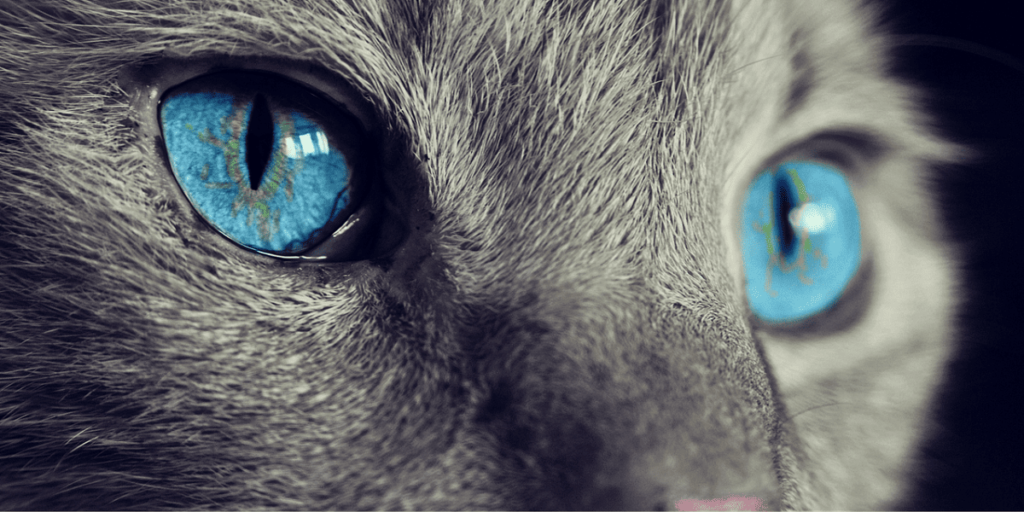Table of contents
Vision is one of your cat’s most important senses. Cats are nocturnal and can see at night thanks to specialized rods that humans lack. Their pupils adapt to light levels, and their field of view reaches about 260° compared to 230° in humans. However, cats are nearsighted and rely on their whiskers to sense their surroundings. Several diseases can affect their vision and, if untreated, lead to total blindness.
Eye Diseases
Conjunctivitis
A common condition in both humans and animals, conjunctivitis affects the inner eyelid and the corner of the eye. It can result from allergies or bacteria. It causes irritation, pain, and sometimes difficulty opening the eyes. A veterinarian can prescribe medicated eye drops to treat the infection.
Glaucoma
Glaucoma occurs when internal eye pressure rises, potentially damaging the optic nerve. Only surgery can relieve the pressure and prevent irreversible damage and vision loss.
Cataract
A white reflection in the eye reveals a cataract – an opacity of the lens. A severe cataract causes blindness. In early stages, surgery may help restore vision. Signs include bumping into furniture, walking unsteadily, or being startled easily.
Prolapse
This infectious disease resembles conjunctivitis and develops in a similar way. Immediate treatment is necessary.
Retinal Detachment
This condition causes progressive vision loss leading to blindness. Some breeds, such as Persians, are more prone to it.
Feline Herpesvirus
One of the three viruses responsible for feline upper respiratory infections (coryza). It primarily affects kittens or stressed cats with weak immune systems. Symptoms include red‑brown eye discharge. The virus can remain in the body for life, reactivating during times of low immunity.
Feline Chlamydiosis
A contagious condition that usually starts as conjunctivitis in one eye and soon spreads to the other. The eyes become swollen and produce discharge.
Feline Infectious Peritonitis (FIP)
This serious viral disease can cause inflammation of the iris, cornea, and vascular layers of the eye, sometimes leading to ulcers.
Symptoms
A cat losing its sight may seem disoriented or startled by sudden movements. Typical signs of infection include redness, discharge, crusting, and swollen eyes. Your cat may rub its eyes frequently due to itching and discomfort.
Treatments
Do not let an infection progress. Consult a veterinarian promptly. Depending on the diagnosis, treatment may involve medication, surgery, or pressure tests to detect glaucoma. Cataract or corneal surgery may be necessary in some cases, and implants can sometimes be fitted.
Tip: Cat health insurance can help cover medical expenses for eye exams and treatments.
Prevention
A cat’s eyes should be cleaned and checked regularly, especially in sensitive breeds. Vaccinations help prevent some of the viral infections that can damage the eyes. Early intervention increases the chances of complete recovery.
Cats can suffer from many eye disorders, some mild and others serious. Quick treatment can often prevent lasting damage, while neglect can lead to blindness. At the first sign of redness, discharge, or vision problems, see your veterinarian immediately.


